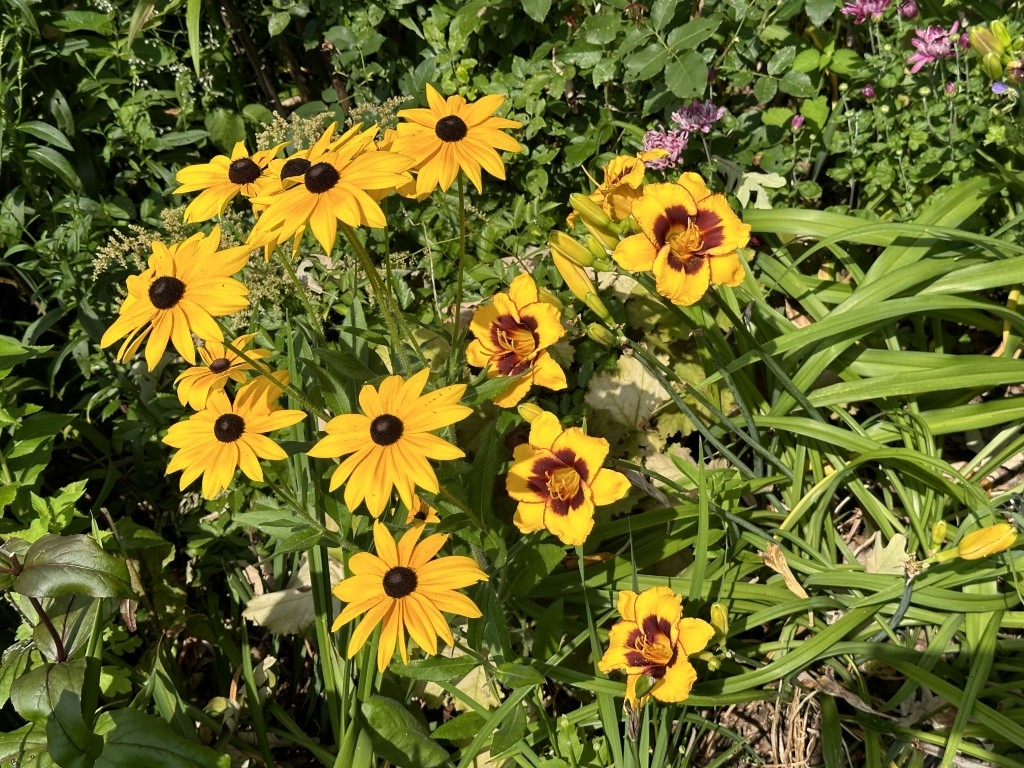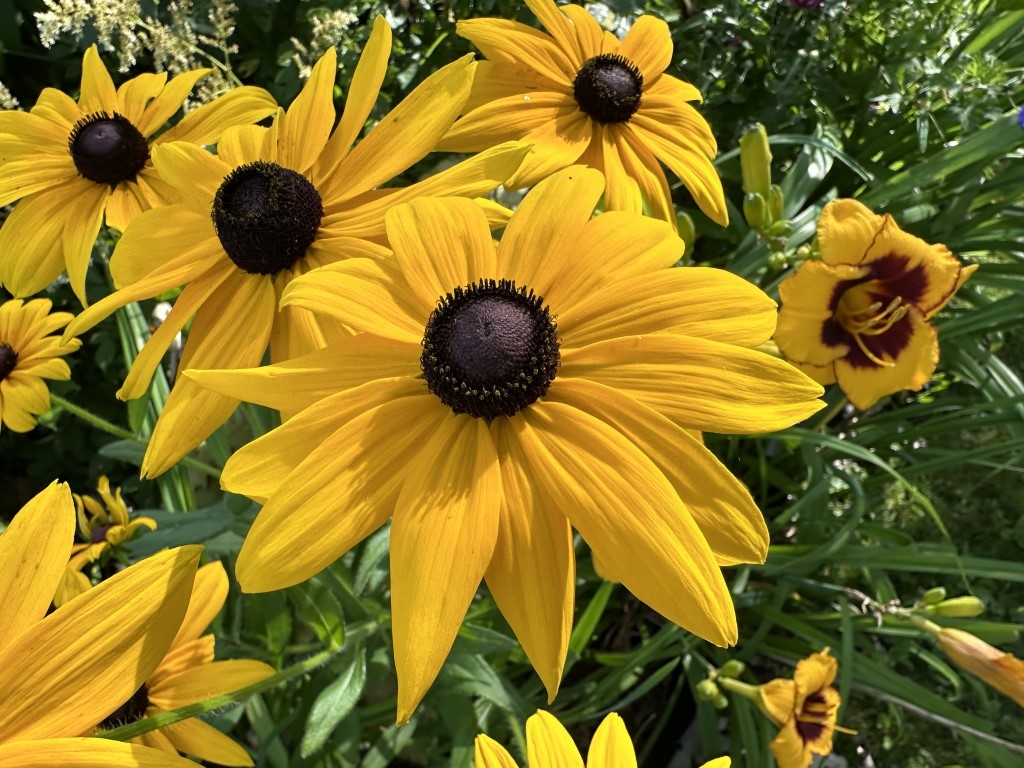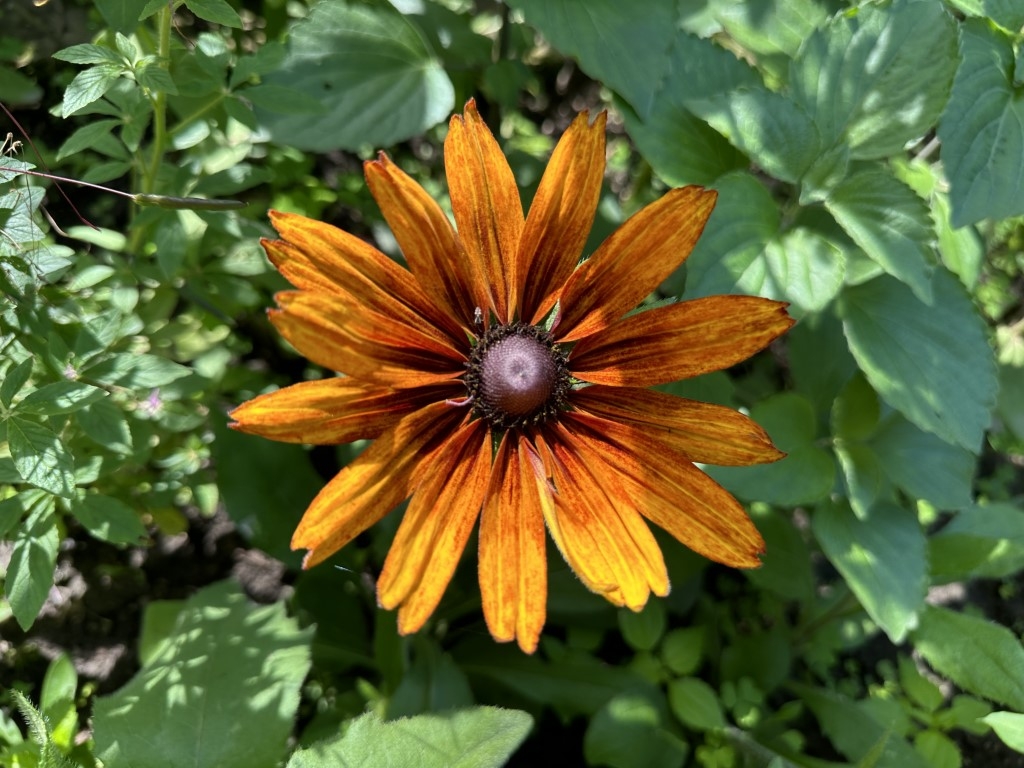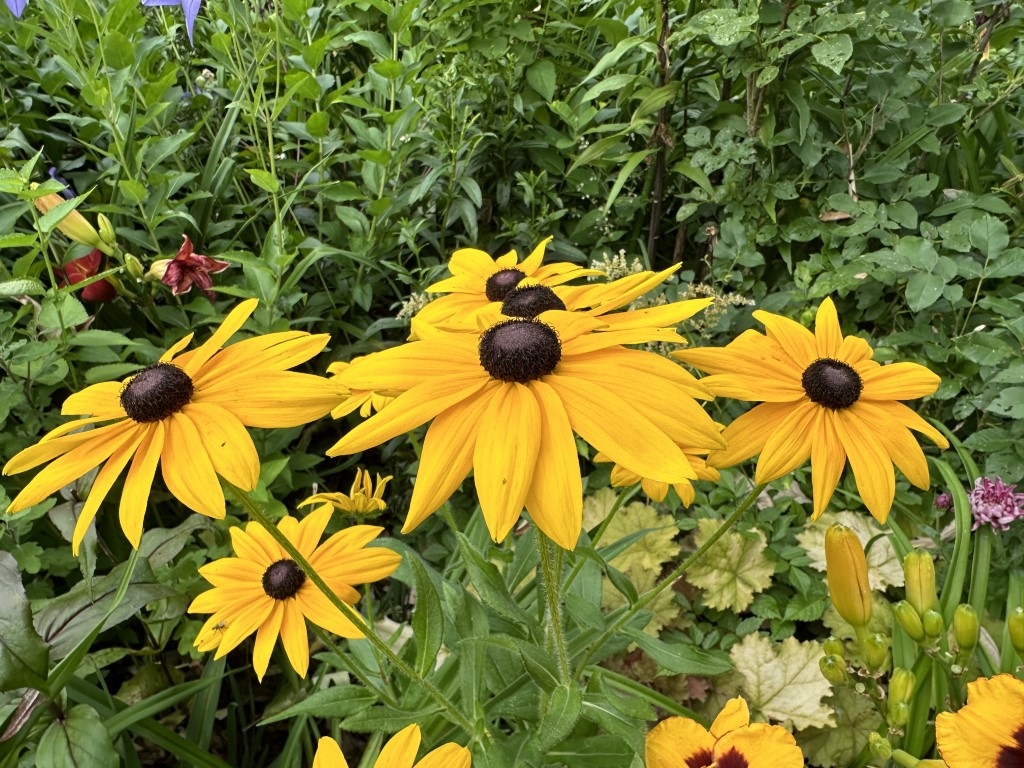I like to try growing new rudbeckia (black-eyed Susan) cultivars, but I keep coming back to my two favorites—‘Indian Summer’ and ‘Autumn Colors’.
Rudbeckias like good air circulation, well-drained soil and full sun. I don’t have any full sun in my yard, and I tend to cram my plants together tightly, so my plants don’t get good air circulation either.
But thankfully they don’t seem to care.

‘Indian Summer’ grows 36 inches tall with huge flowers. I use it to anchor the back of annual and perennial flowerbeds.

I also love that this cultivar surprises me with volunteer plants from time to time (it can self-seed), and often survives our harsh winters even though I grow it as an annual.

‘Autumn Colors’ features gorgeous brown, dark-orange and reddish-brown flowers that grow 18 to 24 inches tall. That color is hard to find in most annual flowerbeds, so those 5-inch flowers are especially eye-catching.
Both of these plants are considered short-lived perennials, but they also bloom the first year from seed as annuals and they self-seed. So whether they survive winter where you live, or not, they are pretty easy to grow.
I start my plants indoors each winter so I can get a jump on the blooming season. But you can plant seeds directly in a flowerbed in spring once the danger of frost has passed.
Plants I start indoors usually start blooming in mid-to-late July. Plants that are started from seeds outdoors will usually start blooming in mid-August in my Zone 5 garden.

I’ve always wondered where the odd latin name “rudbeckia” came from, so I did a little snooping. It honors a Swedish botanist named Olof Rudbeck. Now we know!
